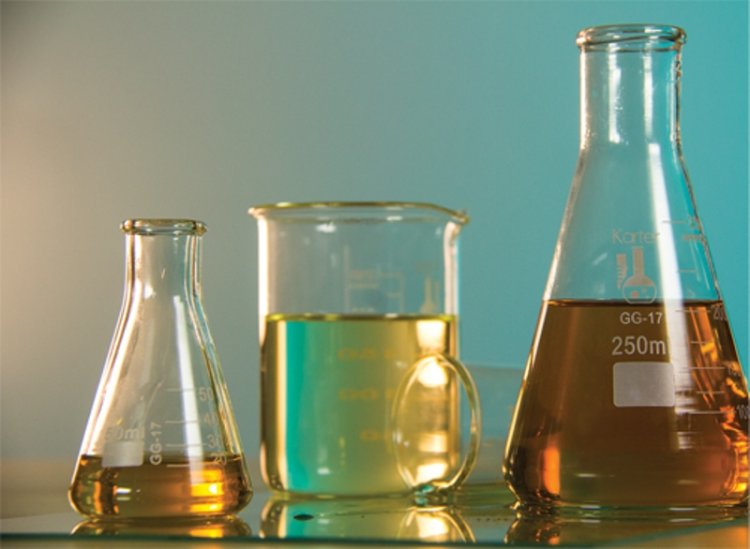9 Simple Steps to Understand and Assess the Quality of Viscosity Index Improvers
It is nice to know what viscosity index improvers are supposed to do before one runs any test. Their main job is to keep the lubricant stable at different temperatures.

Lubricant thickness or viscosity is an essential aspect of properly functioning the lubricant. Viscosity describes being thick or thin, a liquid that is thicker or thinner than another. Machines in various industries demand the use of lubricants for smooth running. These lubricants are supposed to maintain their thickness relatively constant despite temperature changes.
That's where viscosity index improvers come in. Additives that assist the lubricant in maintaining thickness across various changing temperatures. So, how can one determine whether these improvers are doing their job well? Let's bring it down to some easy-to-understand steps.
What Are Viscosity Index Improvers?
So, before discussing the quality of these additives in more detail, what exactly does this additive called VIs do to your lubricant? These special lubricant chemicals stabilize their flow when exposed to heat or cold temperatures. A classic example is hot weather, when lubricants become less viscous, reducing their capacity to protect moving parts. VIIs also maintain lubrication in balance to ensure efficient performance at low temperatures. Under these conditions, the machines would wear down much sooner due to poor and uneven lubrication.
Why Is VIIs Quality Testing Important?
No two viscosity index improvers are alike; it is essential to understand what makes them different. It also helps you avoid investing in poor-quality VIIs. Using poor-quality additives results in increased wear, machine breakdowns, and higher maintenance costs. Thus, quality testing ensures none of these issues occur.
Step 1: Understanding the Role of Viscosity Index Improvers
It is nice to know what viscosity index improvers are supposed to do before one runs any test. Their main job is to keep the lubricant stable at different temperatures. A good improver will ensure the lubricant does not get too thin in heat or too thick in cold. It has to be correct: if the viscosity varies too much, the lubricant will not flow as it should, and parts can grind together, wearing down. A good improver keeps things running smoothly, no matter the temperature.
Step 2: Test Temperature Stability
One of the simplest ways to test the quality of any viscosity index improver is by checking its performance under both hot and cold temperatures. This means heating and cooling the lubricant to determine whether it will retain consistent thickness. Good-quality VIIs allow the lubricant to resist extreme changes in viscosity. You can conduct these tests in a controlled lab with tools to measure viscosity under different conditions. A stable lubricant at the end indicates that the improver is working.
Step 3: Shear Stability
Machines have moving parts that involve friction, hence creating stress on lubricants. Shear force refers to the description of the stress that degrades the viscosity index improvers over time. Shear stability is a test wherein lubricants are placed under high-stress conditions to test whether they remain stable. The good improver must, therefore, be strong enough to resist the breakdown by the effect of pressure. If it breaks down, the lubricant will not be able to protect the machine parts anymore and, hence, cause damage. Shear stability testing ensures that the additive is durable and can withstand harsh operating conditions.
Step 4: Additive Compatibility Evaluation
Lubricants contain chemicals, base oils, and other additives. Viscosity index improvers are supposed to be compatible with these components. Otherwise, the lubricant may not function properly. Generally, compatibility tests ensure that the improver does not cause clumping or separation within the lubricant. Compatibility will ensure that the performance and stability of the lubricant remain intact.
Step 5: Test Oxidation Resistance
Lubricants will eventually come into contact with air, which may cause them to react with oxygen over time. This reaction is termed oxidation and causes degradation of the lubricant. A good VI improver assists in developing oxidation resistance, prolonging the lubricant's life. Testing for oxidation resistance involves exposing the lubricant to oxygen under increased temperatures and observing its stability. If the lubricant still works after this test, it is a sign that the improver is of high quality.
Step 6: Measure Fuel Efficiency Impact
Most lubricants used in vehicles have been developed regarding fuel efficiency. The appropriate viscosity index improver reduces friction; thus, the engine runs with lesser resistance, saving much on fuel consumption. This can be measured by noticing how much energy is saved using a lubricant on an engine or machine. Good-quality improvers will allow the engines to perform better and reduce fuel consumption. It saves money and preserves the environment.
Step 7: Test for Durability
You would want to find out how long a viscosity index improver can last, that is, how long it can keep a lubricant performing well. The best improver will last for many hours with little or no reparation. This can be tested by running the lubricant in a machine over a long period and checking performance. If it retains its viscosity and properties and keeps performing, then you know it has the right improver type. Longevity testing assures that the lubricant retains value over a long period while keeping maintenance costs to a minimum.
Step 8: Real-World Conditions Performance Analysis
Lab tests are imperative, but actual use conditions are the ultimate yardstick for any VII. Machines, as well as vehicles, are used in almost all situations–from cold conditions to extreme conditions of heat. Testing the lubricant with VII's actual conditions confirms its overall performance. Lubricants have been used in car engines and other industrial machines and systems whose performance has to be monitored over long periods. Proper performance in everyday use is undoubtedly a good omen of the high quality of this improver.
Step 9: Check Industry Standards and Certifications
Top-grade VIs usually meet or exceed industry standards set by organizations like ASTM International or SAE International. Looking for such certifications will give you an idea of the grade of the improver. Certified additives undergo the most rigorous testing to comply with the performance requirements. While not a direct test, checking certifications will save time and assure you of the product's reliability.
What's Your Reaction?


















.jpg)